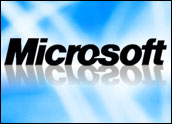
A technical error that affected 28 million Windows users in Europe could cost Microsoft billions in penalties.
The glitch, which disabled the display of a browser choice screen in Windows, violates an agreement between Microsoft and European Union (EU) regulators.
The maximum penalty for such a violation is 10 percent of a company’s annual revenues. In Microsoft’s case, that would be US$8.9 billion.
The European Commission announced Tuesday that it was opening an investigation into the situation.
Compliance is a serious issue, commission Vice President Joaquin Almunia said. If the commission’s investigation confirms it infringed on the agreement, Microsoft should expect sanctions, he added.
Choice Deal
Microsoft failed to roll out the browser choice screen with Windows 7 Service Pack 1, which was released in February 2011, the commissions said. Yet Microsoft indicated in its annual compliance report to the commission that it was in compliance with its commitments.
From February 2011 until the present, millions of Windows users in the EU may have not seen the browser choice screen, the commission said.
The inclusion of such a screen in versions of Windows distributed in Europe was part of a deal Microsoft cut with the EU in December 2009.
In that pact, Microsoft agreed to make available in the EU until 2014 a so-called choice screen enabling users of Windows to choose which Web browsers they wanted to install in addition to, or instead of, Microsoft’s Web browser, Internet Explorer.
Contrite Microsoft
Microsoft isn’t disputing that the choice screen is missing from the EU version of Service Pack 1 for Windows 7.
It explained that while it believed when it filed its most recent compliance report in December 2011 that it was distributing the choice screen software to all relevant PCs as required, it missed serving the software to the roughly 28 million PCs running Windows 7 SP1.
To remedy the situation, Microsoft said that it’s taking the following steps:
- Push a fix to all affected computers to display the choice screen.
- Launch an investigation to be be carried out by an independent attorney to determine what caused the technical glitch.
- Request that the time Microsoft is required to provide a browser choice screen in EU editions of Windows be extended 15 months.
Increased Scrutiny
While Microsoft contends the error was accidental, the company is still likely to be treated sternly by European regulators, according to Michael Cherry, the Windows analyst for Directions On Microsoft.
“When one is under essentially a court order to do something, one has to perform,” he told the E-Commerce Times.
“You can’t just shrug your shoulders and say, ‘No harm, no foul,'” he added.
“I don’t think there’s anything sinister here, or even an attempt to circumvent the requirement, but the end result is non-compliance,” he observed. “Those things have to be taken seriously.”
How seriously remains to be seen. “From the regulators’ point of view, they have to punish someone who hasn’t followed through on a remedy that’s been agreed upon,” Keith N. Hylton, a professor at the Boston University Law School, told the E-Commerce Times.
“But the likelihood of consumer harm is extremely low,” he added. “Most people know there are other browsers out there.”
Since Microsoft has had epic run-ins with regulators on both sides of the Atlantic in the past, this latest slip could have broader consequences for the software maker, according to IDC analyst Al Gillen.
“Any misstep by Microsoft will raise the level of scrutiny it will get on future products,” he told the E-Commerce Times.
That can’t be good news for Microsoft, which plans a massive refresh of all its products later this year.
“This is a bad time to have regulators looking at you more closely because you’re trying to get products out the door,” Rob Enderle, president and principal analyst for the Enderle Group, told the E-Commerce Times.





















































Social Media
See all Social Media